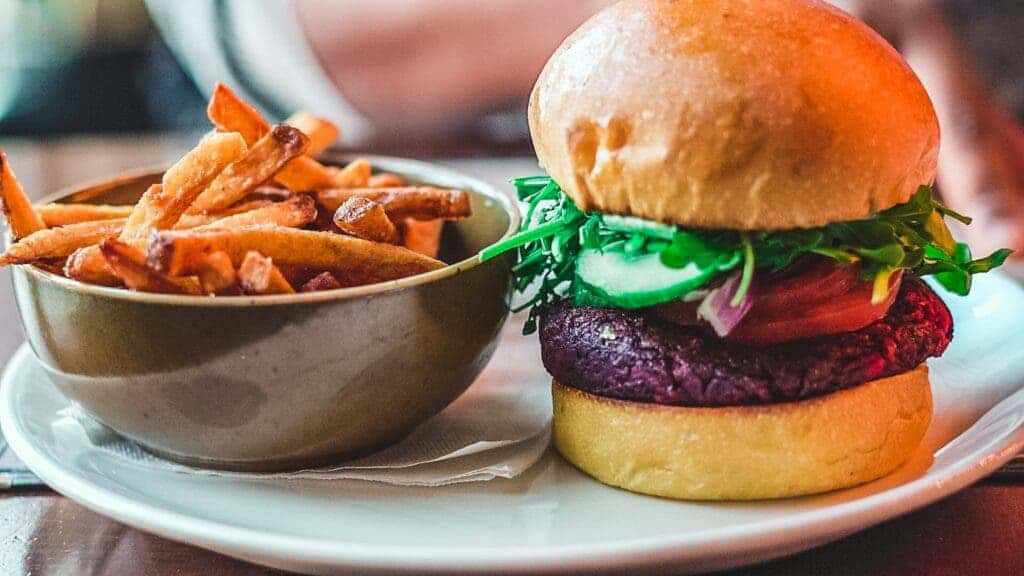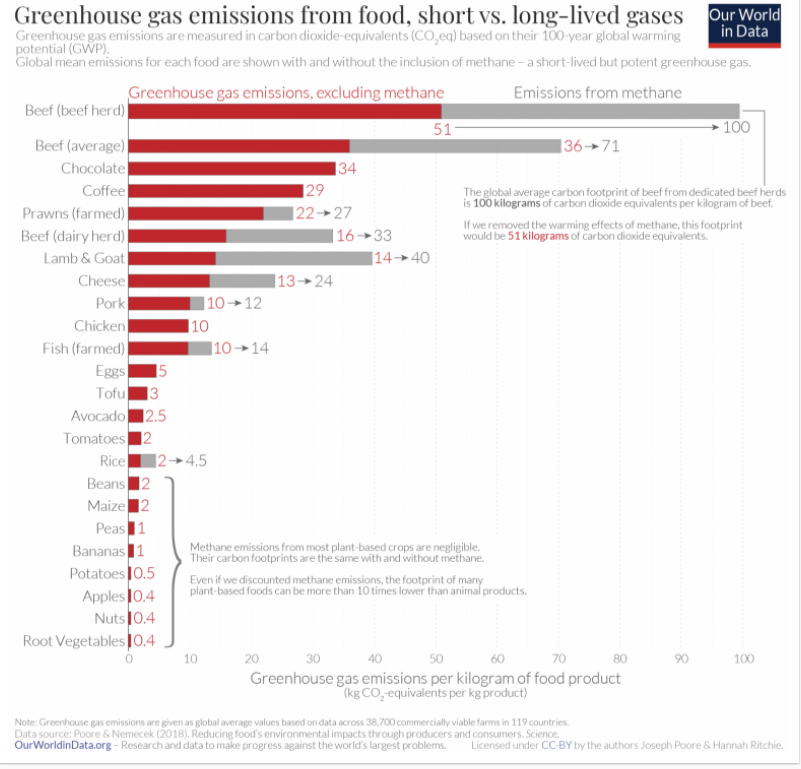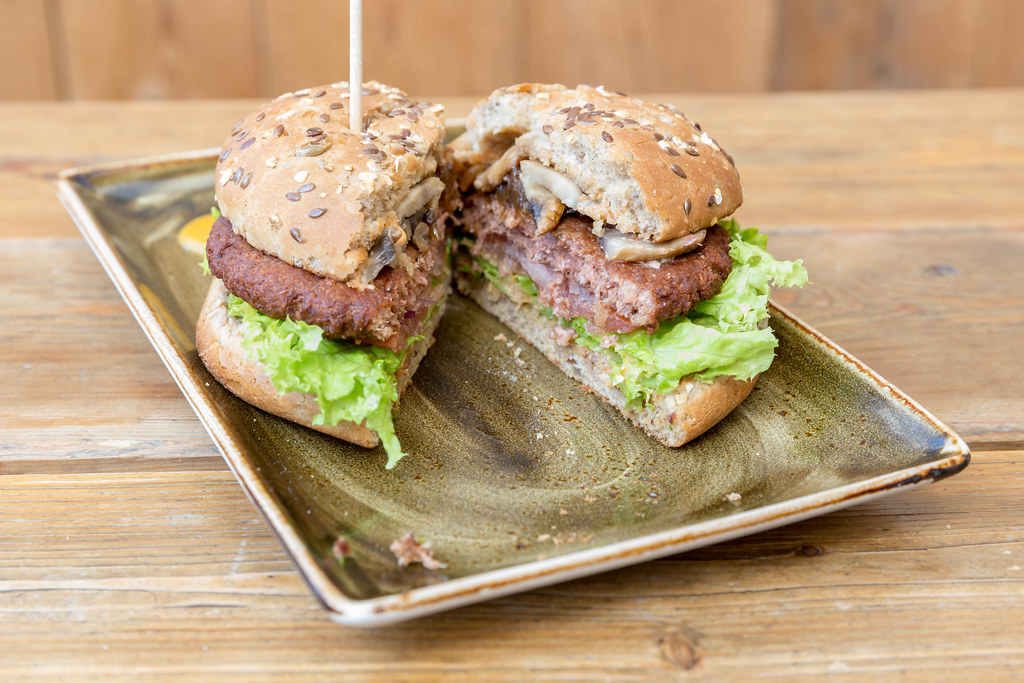AIs are scouring through thousands of compounds to find delicious meat alternatives
BLOG: Heidelberg Laureate Forum

This is part of an ongoing series of articles on how Artificial Intelligence is currently being used to make the world a better place. Other articles in the series are soon to follow!

For millions of people, burgers are the ultimate comfort food. They’re tasty, easy to customize, and typically cheap. But the humble burger carries a hidden environmental cost, using up a striking amount of resources. According to one recent UN estimate, one single beef burger uses up around 2,000 liters of water; add in some bacon and cheese toppings, and you’re up to around 3,000 liters. Beef (and red meat in general) is also a major contributor to climate change and uses up vast amounts of land.
Your burger may come cheap, but the planet is picking up the rest of the bill. Due to this reason (and others), many people are increasingly opting for vegetarian replacements.
Years ago, these meat replacements tasted notoriously bad. Things have changed massively in recent years and depending on where you are in the world, you may find several alternatives that taste good (or at least okay). But there’s still a way to go — and this is where AI could help.

Finding the right ingredients
A burger is nothing if not filling, and if veggie burgers are to compete, they also need to do the same. In other words, they need to have a lot of protein. But vegetarian proteins, healthy as they may be, don’t taste the same as meat protein. For instance, protein from pea (a common substitute) often has a bitter, grassy aftertaste that our taste buds are quick to pick up, while protein from beans or soy often tastes dry. It’s not just the taste, either: vegetarian patties also strive to replicate the texture and look of ‘real’ burgers.
Companies have been finessing their recipes for years, but it’s not an easy task. To find the right combination of ingredients, you need to try out many different compounds — but there are just so many of them. There are some 250,000 edible plant species in the world, each with its own varieties and subtypes. Then, the interactions between different compounds are also hard to predict, so you end up with an uncountable number of possibilities.
Instead of manually trying things out, or building strictly from previous experience, some researchers are using AI for the problem — specifically, machine learning. It’s a typical type of problem for machine learning. You start off by building a database of all the known edible plants, parametrizing them as much as possible. You add in what data you have from previous research about what combinations are (or aren’t) good together, and what types of results are desirable. From there, algorithms can filter down ingredients that are unlikely to bring anything good into the mix, and highlight potential combinations that can create desirable flavors. The results would then be tested (by humans), producing more feedback for the algorithm to work with.
It’s not uncommon for algorithms to produce combinations that human experts may not have even conceived, especially given the sheer number of possibilities. Furthermore, algorithms can identify compounds that can imbue other appealing properties, like for instance the specific flavor of barbecue meat or the “bleeding” of meat burgers.
The approach works, and some of the most successful companies are using it, as are several start-ups. It’s not just patties or meat, either. AIs can also find compounds that, put together, can resemble milk, scrambled eggs, even cookie dough. For instance, one algorithm discovered that protein from mung bean bears similarities to scrambled eggs, potentially hinting at a vegetarian substitute. With the aid of AI, developers have big plans in store — they don’t just want something that tastes like meat, they want something that tastes better.
Using AI to produce new recipes isn’t exactly a new idea. Years ago, the famous Watson AI was used to come up with salad recipes. Among other ideas, Watson suggested pairing morel mushrooms and Japanese bonito fish flakes (katsuobushi) with leek, hazelnut, and pear. That’s as weird a salad combination as you’ll ever hear, but according to one journalist who tried it out, it tastes surprisingly good.
An AI makes a salad

It’s a different way of thinking about food altogether. Cooking was long considered an art, but increasingly, it’s starting to be considered a science. Ingredients are nothing more than parts of an equation or parameters, and chefs need no longer be human. It’s also telling that companies using AI to develop new veggie burger recipes are calling themselves tech companies, not food companies.
But the problem is that even with AI, the process is very slow. Furthermore, because companies (and not universities or research institutes) are the ones largely driving this area of research, the field isn’t exactly transparent, so it’s hard to tell how progress is being made.
“During the last several years, increasing awareness of the impact of meat production on climate change, as well as meat shortages during the pandemic, have made people more accepting of plant-based alternatives,” says LiLi Zyzak, who recently authored a study that compared veggie burgers with meat burgers. “There are a lot of products out there, and food companies are doing interesting research, but nobody ever publishes anything because it’s a trade secret.”
Zyzak and colleagues used both mass spectrometry and human testers to analyze how close existing alternatives are to real burgers. In a study presented at the American Chemical Society in 2021, they explained that while meat replacements have come a long way, they’re still quite different from ‘real’ meat. Powered by AI, meat replacements will likely become tastier and tastier, and it’s not hard to foresee a not-too-distant future where they’re just as, or maybe even tastier than ‘real’ burgers.
Whether or not this will be enough to persuade more people to opt for vegetarian options remains to be seen. Humans are creatures of habit, and taste alone may not be sufficient for some. In the meantime, we can expect AI to concoct more delicious recipes.


In fact, finding a tasty burger variant seems to be comparable to the task of determining whether an unknown animal resembles more of a cat or more of a dog. And current AI can do that. But humans can do it too. Except that humans have more prejudices than AI programs and are also not as fast.
Yes, humans are capable of many tasks. They are also capable of creating new meals, new clothes, new batteries, and new images. But in most cases it takes quite a long time for a person to create something really interesting new. Artificial intelligence currently has a real advantage over humans: AI can digest millions of recipes without being confused, irritated or even disgusted. This is where AIs are superior to us: AI doesn’t get bored, AI doesn’t complain, AI doesn’t need an award or praise to do its job.
Quote from above:
Yes, fake burgers can be tastier than real burgers. At least for those who are used to it.
When I was growing up, here in Europe, there was a story that Americans prefer artificial flavors to natural ones and that, for example, they find natural strawberry flavoring artificial because they are not used to something natural. But I will confess that I liked these kinds of stories because they conveyed a nice prejudice about Americans.
In reality, these statements may be true, but they also apply to Europeans. Because when we have positive feelings about an experience, we tend to associate all facets (including flavors) with the experience.
There is definitely a cultural component to developing “the perfect burger”. Presumably, this is also a problem that could be approached by AI: start from a control group in different countries/culture, assess their different preferences, and then customize your product accordingly.
Deep Learning is close to gut reasoning
Quote from above:
This recipe is perhaps inspired by the general idea of food pairing, namely (quote from Wikipedia) food pairing, is a method for identifying which foods go well together from a flavor standpoint.
A good cook chooses aromatically matching foods based on his experience and ultimately the learned gut feeling.
An artificial neural network ultimately works in a very similar way: It discovers simple connections between adjacent data and gets better and better at it the more data is available to it.
Deep learning is therefore not logical reasoning as many older people who still know the beginnings of artificial intelligence think. But precisely because artificial neural networks and thus deep learning primarily recognize connections that are very close to the data (which are of rather superficial quality), deep learning is so much more useful than symbolic artificial intelligence. Because most of the things we do are not based on in-depth analysis, but on recognizing patterns and simple connections.
Deep learning often learns/recognizes correlations much better than humans
Even the best radiologists are unable to identify race [Asian, White, Black] from a CT scan or chest radiograph because a CT scan or chest radiograph does not reveal anything about skin color or subtle details in betray relation to soft tissue. But Deep-learning systems can. To the arXiv article Reading Race: AI Recognises Patient’s Racial Identity In Medical Images to quote:
Race detection success rates are surprisingly high. Consistently higher than 90% and up to 99% in well-trained deep learning systems.
The interesting thing about these findings is that not only radiologists but also AI scientists cannot tell how AI does it.
Fact:</b Deep Learning succeeds in finding connections/correlations where people fail. And it can't, in most cases, tell us humans what elements are contributing and why there's any correlation at all. It's like magic!